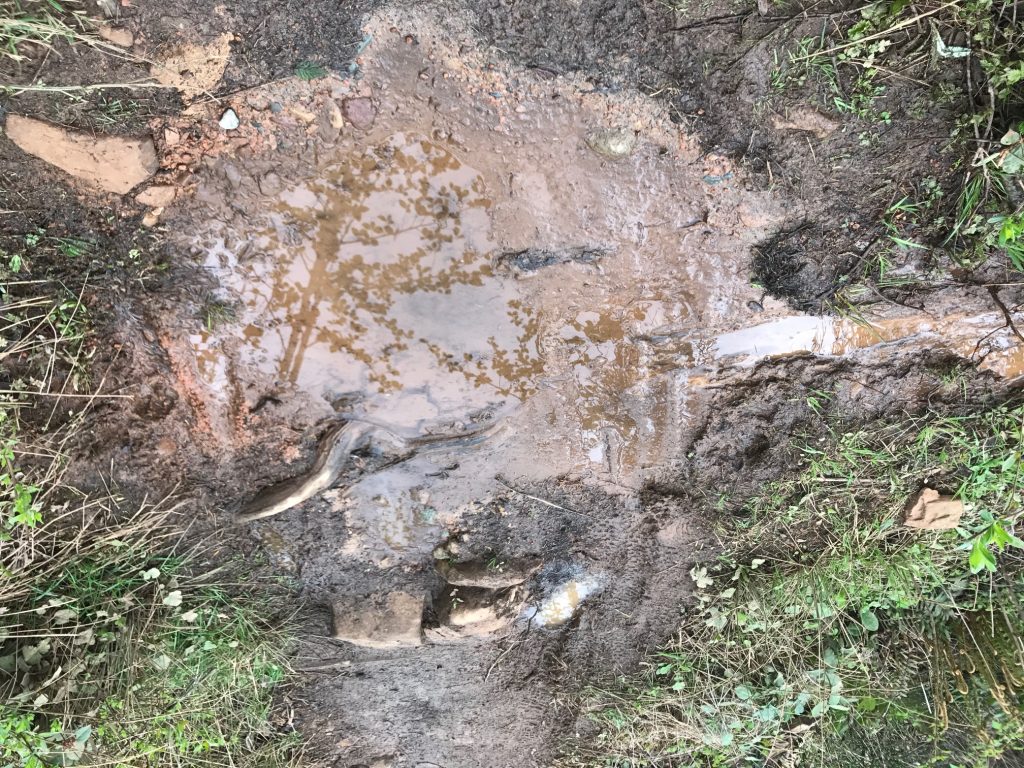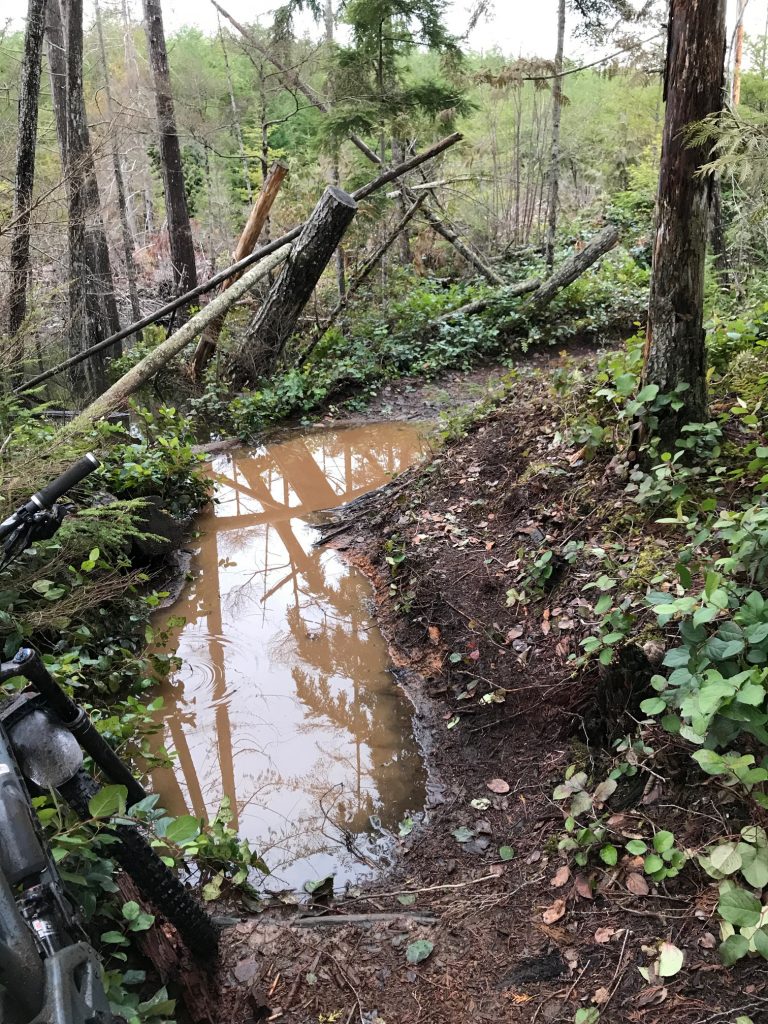Tips for responsible trail selection and usage in the wet season

As the days grow longer, and the snowline begins to creep up the mountain, we’re all itching to get out on the trails. While we are fortunate to live where we do – which often enables use of our trails 12 months a year – trail use in the wet months requires special consideration. Our goal is to not tell you not to use the trails, but is instead to provide you with information so that you can make an informed decision on what and when to ride/run/hike.
Trails built following modern trail building practices that follow IMBA and Whistler standards are able to withstand wet weather and heavy traffic better than ever, but building to these standards is incredibly labour intensive. While Cumberland’s trails are gradually being improved and modernized over time to handle increased traffic, some of our trails are not well suited for use in wet conditions. Learning how to identify which trails are better able to handle traffic in wet weather will increase your enjoyment while decreasing trail maintenance requirements. Remember, coming back from your ride covered in mud may be fun, but it also means that dirt on your bike and clothes has been displaced from the trails, where it serves a better purpose!
After several months of heavy rains and (sometimes) snow, here are a few things to keep in mind when you hit the trails:
- Plan your ride. Think about what trails are appropriate for the conditions. Things like soil type, grade and elevation will all factor into current trail conditions.
- Is the trail tread predominantly mineral soil or rock (that is well drained), or is it black, organic material that holds water like a sponge?
- After heavy rainfall, has the trail been given enough time to dry to a rideable level? Well drained and armored trails may be rideable 2 or 3 days after, while organic surfaced trails can sometimes take 1-2 weeks to dry, depending on slope, sunlight, etc.
- Does the trail travel through low lying areas with poor drainage, or is it known to have lots of puddles, which often results in trail braiding?
- Did the snow just melt from the trail resulting in high soil moisture content?
- Do you have a back-up plan in case the conditions are worse than anticipated?
- Be alert! Watch for (and report) trail hazards. Heavy winds and big snow loads may result in fallen trees blocking trails, while heavy rains can result in trail erosion.
- Check Trailforks for the latest report (or consider submitting your own reports). Ask others you see along the way for trail condition updates. The more information that is available, the better!
- Contribute to maintenance:
- Considering carrying a small saw so that you can clear minor windfalls along the way.
- Help drain puddles. Trail builders and maintainers install “drains” in low spots to allow water to flow off the trail. However, these drains become clogged with needles and branches over time, and need to be regularly cleaned out. A foot or stick is sometimes all that is needed to allow a puddle to drain!
- Watch for upcoming UROC Trail Maintenance Days, scheduled to begin in March.
- Join UROC. The more members that the club has, the more resources can be dedicated to trail maintenance and construction.
- Have fun! After all, riding in the winter is a bonus that few Canadians get to enjoy ….
Special thanks to the Tri Cities Off Road Cycling Association (TORCA) for their 2017 article that was of great assistance in the drafting of these tips. See their full article here: https://www.torca.ca/riding-in-the-wet-a-guide-to-responsible-trail-selection-and-usage/



